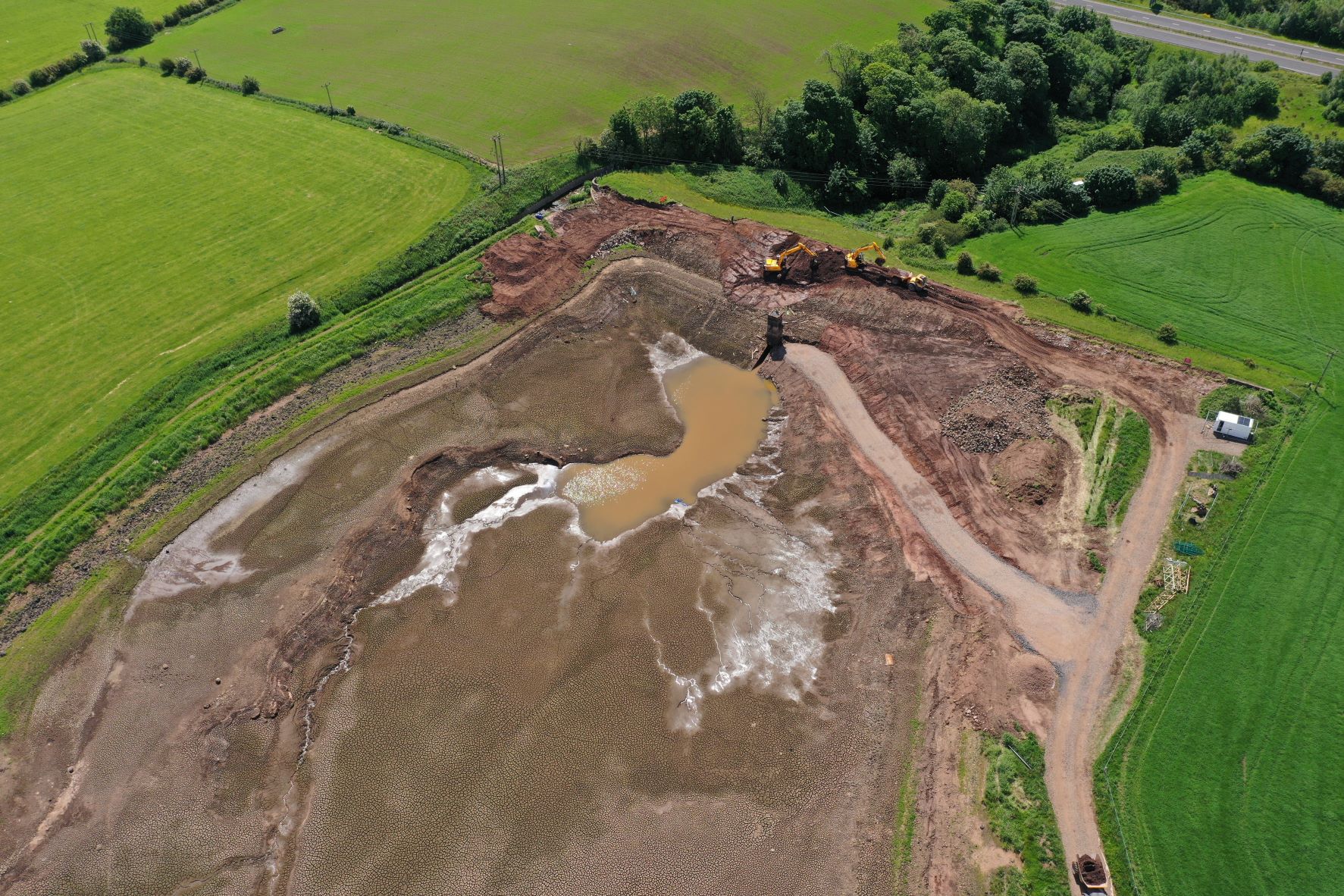
REDUCING the levels of a reservoir – even a relatively small one – is not a task to be undertaken lightly. First, there’s the need to safeguard fish and other wildlife in and around the water; secondly all that water can’t just be allowed to gush out into downstream watercourses: it needs to be controlled.
When Scottish Water took the decision to lower the level of the redundant Millglen Reservoir, near Ardrossan in North Ayrshire, it called in contractor George Leslie, an approved delivery partner which had already completed a successful dam drawdown at the Pundeavon Reservoir, near Kilbirnie.
Prior to this project, Millglen Reservoir covered an area of approximately 45,000m² and contained around 130,000m³ of water. But since it was no longer required, Scottish Water wanted to reduce the volume of water to below 10,000m³, thus minimising the future cost of maintaining a now-redundant asset.
George Leslie’s £750,000 contract was completed in two phases commencing in May 2021. The first entailed building a temporary access road and then diverting two streams (Rowanside Burn and Stanley Burn) that feed the reservoir. Then, with no more water flowing into the reservoir, the second phase was to allow the reservoir to empty under controlled conditions.
The entire project was completed in November 2021.

The streams were diverted via a reinstated by-wash channel that followed the eastern boundary. The access road, meanwhile, was constructed along the reservoir’s western boundary.
The reservoir drawdown had to be carefully planned and executed to avoid pollution and damage to habitats and structures downstream. In compliance with a technical specification provided by the project’s consulting engineer Mott MacDonald, George Leslie drew on its prior experience and established procedures to complete the works in a safe, controlled manner.
This reduction in volume was achieved by forming a V-shaped notch and channel through the dam and allowing the water to drain out.
First, though, George Leslie had to install silt mitigation measures in the burn downstream. This included construction of several stilling ponds and filter membranes to clean the water flowing out of the reservoir.
The second phase also required George Leslie to break out the concrete wave wall and lower the overflow weir and dam crest to match the reduced water level. Extensive earthworks were also required to profile the new margins of the reduced reservoir.
The existing masonry tower, containing the reservoir level control valves, also had to be demolished, along with the steel bridge that provided access to it from the bank.
At the notch cut into the dam, a new in-situ concrete throttling structure was built to control flows through the new channel. A ‘vegetated wall’, formed using pre-filled bags, was constructed on either side of the throttling structure.
To protect this channel from erosion, George Leslie laid an impermeable geotextile membrane covered with a layer of recovered pitching stones from the dame face to hold it in place and slow the flow of water through the channel.
The contractor also used ‘bio-engineering’ to mitigate the risk of erosion. This comprised the placing of shear stress turf, grown to order by specialist supplier Salix, to create a living reinforcement layer either side of the channel.
The drawdown, which reduced the water level by about 7m, had to be carefully controlled to allow a team from Ayrshire Rivers Trust to rescue as many fish from the reservoir as possible. The Trust managed to net around 400 wild brown trout – including some specimens up to 3lb – which were then relocated to Busbiemuir Reservoir about a mile away.
Following the completion of the drawdown, George Leslie reinstated the Rowanside Burn and Stanley Burn flows into the reservoir basin and in-filled the by-wash channel. Silt mitigation measures downstream were then removed.
One of the practical challenges was the need to operate heavy plant in a sensitive location with soft ground. In addition to the temporary haul road, bog mats were employed to protect the ground and spread the load underneath the earthmoving equipment.
George Leslie supplied its own tracked excavators, ranging in size from 14 to 26 tonnes. Specialist excavator attachments, such as grabs and tilting buckets, were supplied by Mount Plant of Grangemouth and Stewarton-based Blackwood Plant, which also supplied site dumpers.
Specialist hirer Kattrak supplied specialist all-terrain dump-trucks designed with low ground-bearing pressure – ideal for soft terrain.
Other suppliers included Wernick Hire, which provide site accommodation, GAP Group, supplying a range of small plant, and Selwood, which supplied pumping equipment.








